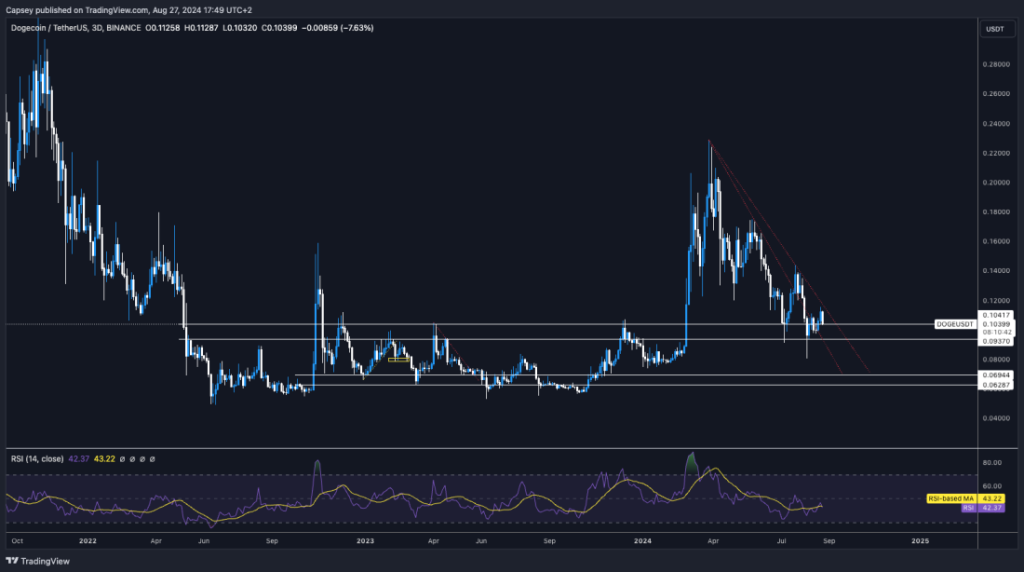
In today’s report, we'll dive deep into:
- The high-stakes data releases that could make or break the Fed's decision
- Why a "soft landing" might just be the golden ticket for risk assets
- The upcoming earnings report that has the potential to shake the entire tech sector
- Exclusive insights into the personal trading strategies of Cryptonary’s Head of Analysis
Fasten your seatbelts – it's going to be a thrilling ride!
Disclaimer: This is not financial or investment advice. You are responsible for any capital-related decisions you make, and only you are accountable for the results.
This week’s important data
This week, we have the Fed speak, GDP data, Jobless Claims data and Inflation data.In terms of Fed speakers, so far, we have heard from Mary Daly, who suggested that the Fed would be looking for a series of 25bps cuts and would only resort to 50bps cuts if there was a more severe weakening in the labour market - not something we're currently seeing.
However, a methodical series of interest rate cuts is better than any sizeable cuts. We'll explain this in further detail below. Tomorrow, we have Bostic and Waller speaking.
On the data front, we have GDP data on Thursday, which is expected to come in strong at 2.8%, which is good. We also have Jobless Claims on Thursday, which are expected to come in similarly to last week at 230k - again, good.
Jobless Claims now carry increased importance as this is where the market will look for the first signs of the labour market weakening if Jobless Claims begin to spike higher. Then, on Friday, we will have some inflation/pricing data.
Now, the Fed is much more focused on its dual mandate (employment and price stability). With inflation trending down to the Fed's 2.0% mandated target, the major data points to watch are now labour market data points.
However, inflation/pricing data is still important. The markets will be looking for it to come in in line with estimates. Core PCE (MoM) is expected to come in at 0.2%—the same as last month, so all is fine. Personal Spending (from consumers) is expected to come in hotter at 0.5% rather than the previous month's 0.3%. However, the markets would probably react positively to this as it shows a consumer who is still spending.
Overall, we expect the data this week to come in in line and the markets to take it in their stride and continue the general grind higher.
Going into next week and the Fed cuts
In our opinion, next week is the more significant week on the macro data front. The reason is that ISM Manufacturing data is out on Tuesday, JOLTs (Job Openings) is out on Wednesday, ISM Services and Jobless Claims are out on Thursday, and then Unemployment Rate and Non-Farm Payrolls are out on Friday. Yeah, it's a whopper of a week on the data front.If we look at Jobs briefly now, the expectations are that JOLTs will come in slightly lighter, the Unemployment Rate is expected to remain at 4.3%, and Non-Farms print at 160k. If this is what we are to see next week, then the markets will likely react positively to this, and this would then likely lead to the Fed cutting Interest Rates by 25bps at the September Fed meeting on September 18th.
The Fed cuts
This leads us nicely to the upcoming Fed rate-cutting cycle.Essentially, the Fed is reducing the interest rate to 'normalise' policy, making it less restrictive and putting it into a 'soft landing' as bullish for risk assets. The key thing going forward from here is that as the Fed begins to cut rates, the labour market continues to hold up, and the Fed steadily cut rates rather than being data-dependent such that we don't really know what they're going to do and then say at each Fed meeting going forward.
A calculated rate-cutting cycle gives businesses (banks) the foresight they need to lend to businesses and individuals without fearing that a policy will suddenly change. If banks begin to increase their loaning business, this will stimulate the economy, and we'll likely see further growth.
In summary, the Fed cutting in 25bps clips rather than aggressive cuts is better for businesses and the economy. This assumes, though, that the labour market holds up. If it doesn't, that would trigger the Fed to move faster, which might signal a move from a potential 'soft landing' to a hard landing/recession.
Nvidia reporting earnings tomorrow (August 28th)
Nvidia reports earnings tomorrow. Over the last year, Nvidia has continued to beat Earnings expectations, which has led to the stock's dramatic gain in value. Now, it's nearly weighted at 7% of the S&P 500. The expectation for tomorrow is that they'll again beat to the upside. We're seeing the companies that are buying the chips continue to say that their biggest risk is to 'underinvest rather than to overinvest'. This can only be positive for Nvidia.We expect this earnings report tomorrow to be positive, although it may produce substantial volatility. It is a risk, however, that if this earnings report comes in weak or if the forward guidance isn't positive, this may have a more pronounced effect on other Big tech companies that may also sell-off, which may then cause crypto to sell off. Ultimately, we don't see much upside in this, but there are some downside risks that we should be aware of.
Some personal trades I've (Tom) taken
As many of you know, our suggestion for months now has been to concentrate on the barbell portfolio of BTC, ETH, SOL, WIF, and POPCAT.How you then weigh those allocations is based on your personal risk appetite. But, I (Tom) have taken some personal trades yesterday and today. Now, they're not ultra-exciting, but I believe they'll pay dividends. These are trades I am personally taking away from the barbell portfolio.
Trade 1: ETH
People forget the rally that ETH had from early February to mid-March when it went from $2,300 to $4,000 in five weeks. This can happen again. Therefore, I like ETH here in the $2,500's with a Stop Loss/liquidation level below $1,950. The target for this trade would be $4,000. These are multi-month-long holds.![]()
Trade 2: DOGE
It's much more risky, but I really like the TA setup here with DOGE squeezing into the downtrend line and the major horizontal support. Entries between $0.09 and $0.10 would be attractive, with a take profit north of $0.15. The stop loss or liquidation level would be below $0.075. Again, this would be a multi-month hold, and I'd only play with what I could afford to lose.
Cryptonary's take
The next few weeks can continue to be choppy as we see more data between now and the Fed meeting on September 18th, when it's very likely they'll cut Interest Rates by 25bps.As we move into a new rate-cutting cycle, we're very bullish on risk assets, particularly crypto, even if it takes another month to potentially really get going.
What's super important in the future is that as the Fed begins cutting Interest Rates, the labour market continues to hold up, and the Fed embark on a calculated and stable cutting cycle.
This looks like 3 x 25bps Interest Rate cuts in 2024 and then another 4 x 25bps cuts in 2025. An aggressive rate-cutting cycle (50bps at a time) would indicate that the labour market is breaking, and we're heading for a hard landing rather than holding up and we're getting a soft landing.
It's key that the soft landing narrative remains intact. If it does, then come Christmas, prices will be dramatically higher across the board.


